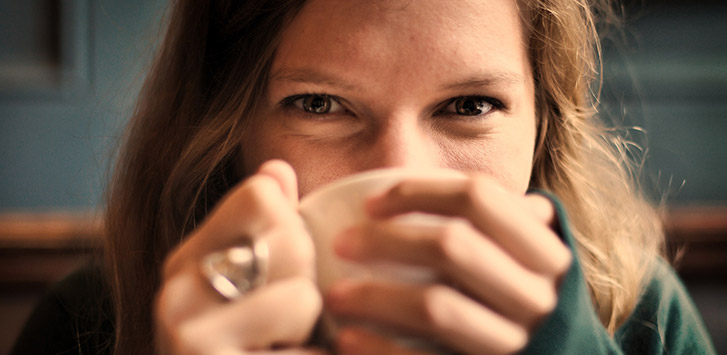
The perfect cup of coffee allows us to “wake up” and get ready to tackle the challenges of the day ahead of us. What is worse is when our cup of coffee tastes not like the delicious beans of Ethiopia or Hawaii but rather a watery mess that’s either way too bitter or way too sour. But before you think that something is wrong with your batch of beans, the problem could lay it the brewing. Maybe the key is in missing the proper coffee to water ratio?
While we may specialize in teaching you how to home roast your green coffee beans to perfection, we also know that’s half of the story. The brewing process is the yin to coffee roasting’s yang. Knowing and dialing in the perfect amount of coffee to water is almost just as essential as getting the perfect roast. Let’s dig a bit deeper into why this is just as important.
A Word on Optimal Coffee Ground Size

Before we dive too far into the deep end with measurements and ratios, we should first speak about getting the optimal grind size for your coffee beans. Now obviously this will depend on the brewing method you prefer, but by-and-large, assume that we will be using medium to medium-coarse ground coffee, unless otherwise explicitly written.
Measurement Sizes for Coffee Grounds and Water
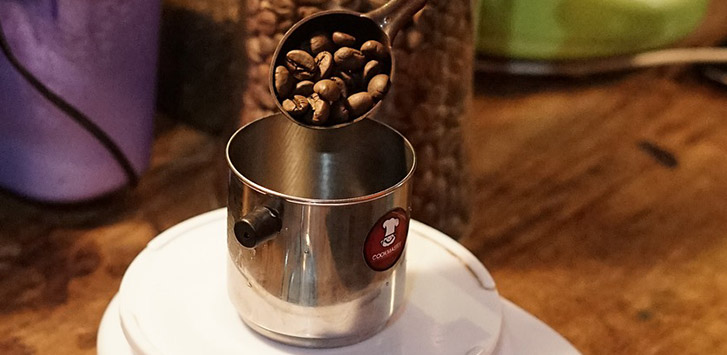
For the most accurate brew ratios, we advise you to purchase a small digital scale, such as this one, to achieve optimal results. Having accurate measurements will help you better understand just how much water to coffee ratio you will need to get the most out of your brewing method.
Because of such, we are basing our ratios by weight (grams of water/grams of coffee) rather volume. However, below you can find a conversion chart for other measurements used like tablespoons, cups, or fluid ounces.
So Why Does the Coffee to Water Ratio Does Even Matter?
At this point, you are probably wondering why exactly all this matters. Like really how important is the water ratio to coffee? Even if it is off by a few grams, can it affect the taste of my coffee that much?
Well, much like roasting coffee, too much or too little can yield disastrous results. The same principle applies to the coffee to water ratios. Getting the correct measurements between the two is crucial to creating the perfect morning cup of joe.
To make a more apt comparison, coffee to water ratios are like any other recipe. Knowing correct measurements can help you either scale up or scale down depending on the situation. The balance between the two can also have effects on both flavors and even the caffeine levels in your coffee too.
Having the right ratio can impart a better mouthfeel as well as viscosity to your coffee.
Additionally, it allows the brew time to impart the full flavor inherent within the bean. An improper or a disproportioned ratio can lead to either over or under extraction which can lead to coffee that is respectively bitter or sour.
Brewing Methods and Suggested Coffee to Water Ratios
Below you can find our breakdown of the most used brewing methods and some suggested ratios to use when making your morning (or afternoon) cup of coffee. You can play around and experiment with ratios to get your preferred combination. After all, experimentation is half the fun of coffee.
Traditional Drip Brewing
Like most of us, we use a traditional drip brewer when it comes to our daily cup of joe. The simple-ness of “set it and forget it” allows us to get the rest of our morning in order so that by the time the coffee is ready, we are also ready to face the day.
However, absent-mindedly filling the coffee pot and dumping coffee grounds in the filter is a recipe for coffee that just does not taste very good. Whether it is under or over extracted is beside the point.
There is a “traditional” measuring ratio used almost strictly for drip brewers. Called the golden ratio, the ratio follows that for every 1 gram of coffee grounds, 18 grams of water should be used. Now obviously if you want a stronger morning brew, 1 gram of coffee to 15 grams of water will suffice.
Presented in another way, let us say you’d like a single 8oz cup of coffee. An 8oz cup of coffee holds about 225ml worth of liquid.
For our example, we will stick to using the 1:15 ratio. So, we will use 225g of water. Dividing the total water weight by the ratio (225/15) will yield 15. Thus, we now know that we will have to use 15g of coffee grounds to make a single 8oz cup of coffee.
Aeropress
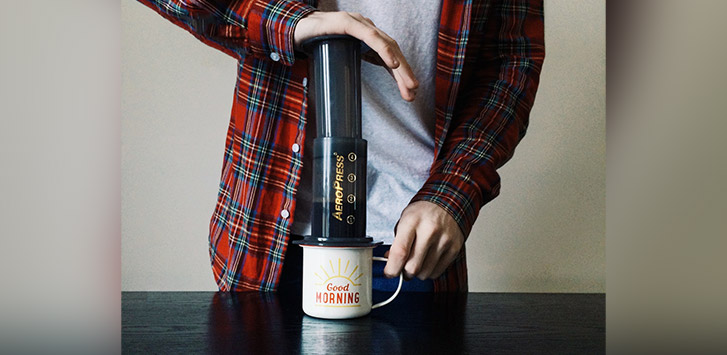
Another favorite brewing method of daily coffee drinkers is using an Aeropress. This brewing method is a bit trickier to nail down a ratio for. We have brewed using ratios between 1:16 down to 1:4 with successful “results”. However, we have found that a 1:6 ratio seems to be the sweet spot for the Aeropress. But like always, the taste is personal and part of the fun about coffee. So, experiment around with different ratios to something that feels right for you and your tastebuds.
Cold Brew
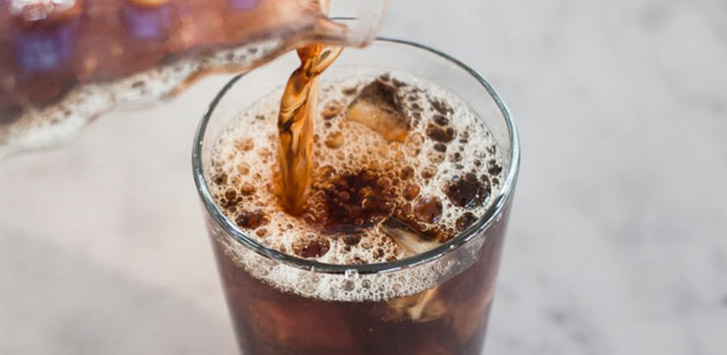
Cold-brew, unlike Aeropress or drip brewers, is a much more concentrated ratio of coffee bean to water of 1:8 for regular cold brew. If you prefer creating a stronger brew overall, we advise a 1:5 ratio. However, unlike more traditional steeping methods that use hot water, the cold water creates a smoother cup overall that is not under-extracted.
French Press
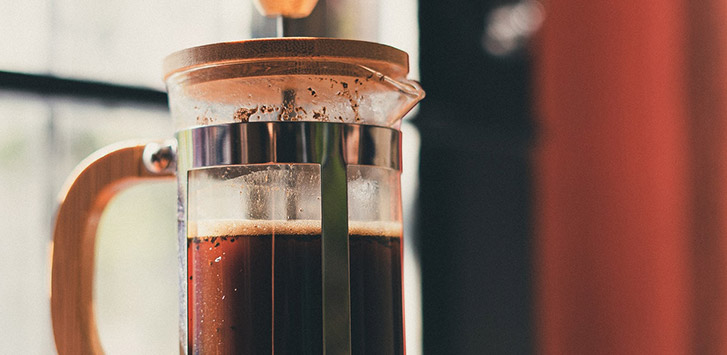
The French press coffee is another common brewing staple that coffee lovers tend to incorporate into their morning routine. This immersion method uses a ratio close to the golden ratio but with a lot less water due to its size. As such, the coffee to water ratio we found that works best is between 1:12 and 1:10.
Pour Over
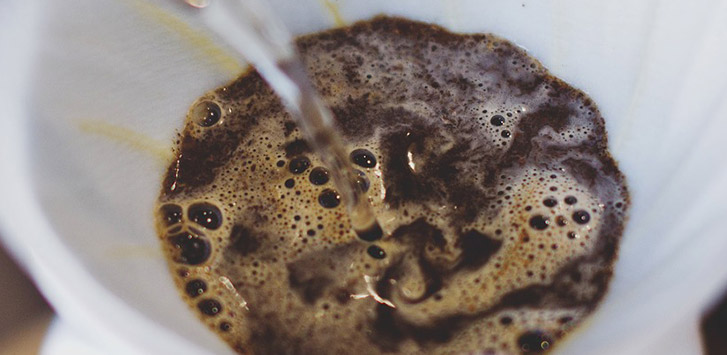
Pour-over coffee is the closest brewing method that nearly matches the golden ratio of traditional drip makers with a ratio of 1:17 commonly; if you want a stronger pour-over stick to the golden ratio of 1:15. This immersion method requires a bit more water to coffee ground to adequately get filtered down to the cup.
Hopefully, we helped impart just how important getting a correct coffee to water ratio is. Going the extra step in preparing your morning coffee can yield great, but more importantly, tasty results that you may otherwise be missing out on. After all, nobody wants a watery or sour cup of coffee to start their day with.